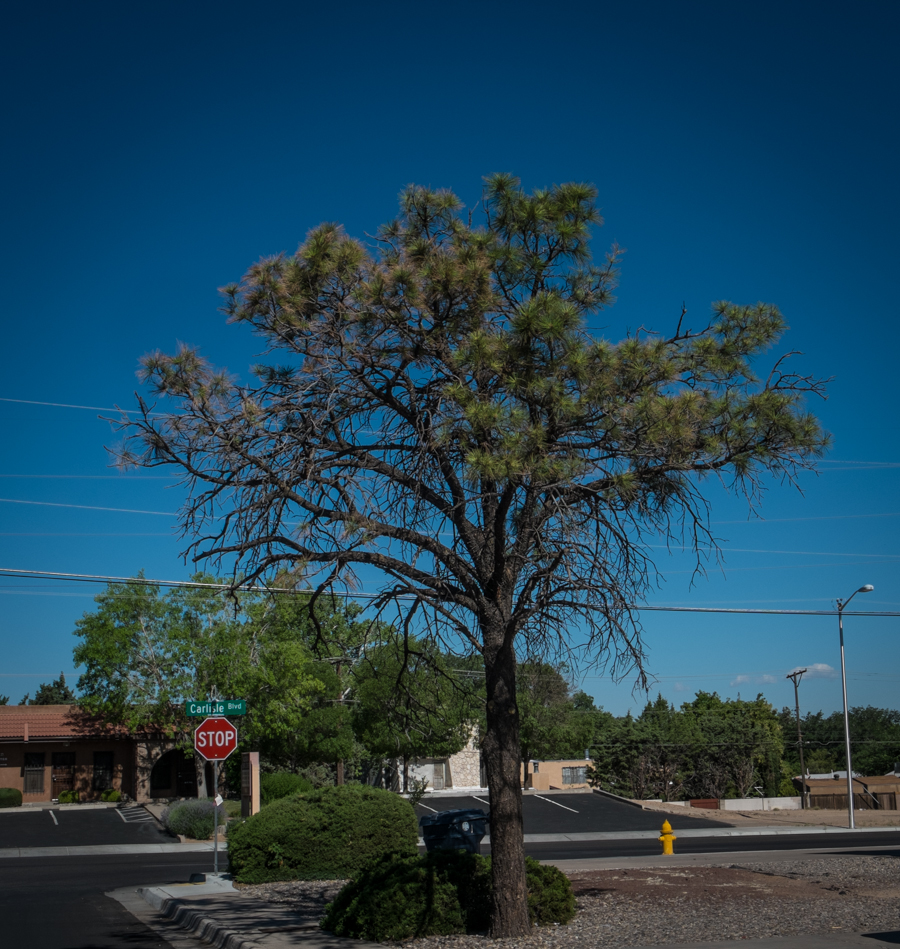Is this what water conservation looks like?
I’m not sure who got to decide that 10 inches of precipitation a year (25 cm) or less defines a “desert”, but by that standard my neighborhood barely slips under the line. In the 15 years that I’ve been collecting data, I’ve averaged 9.78 inches, and data from the PRISM people puts the long term average at 9.71 inches (24.8/24.6 cm).
Years ago, University of New Mexico emeritus biologist Loren Potter took me for a walk around the neighborhood for a newspaper story, pointing out the strangeness of the artificial ecosystem we’ve built. We bring trees that can’t make it on 10 inches a year, then don’t always water them as much as they need. The result was, even then, an urban forest under stress.
As I wrote in the Journal last week, Albuquerque has cut its water use to 134 gallons per person per day. A big part of that involves a reduction in outdoor watering. A result of that is evident on my morning walks – a lot more stressed trees.
Building farms and cities in the desert, moving the water to do it, then responding to the scarcity problems that result, is complicated.


Pingback: Water in the desert, dying urban tree edition — John Fleck | Coyote Gulch
That will be commonplace soon enough. We have a related issue up here: some places have started to conserve water by using reclaimed water on the landscape. Many around here think it is contributing to the dying conifers – salting the soil.
Best,
D
Pingback: Another Week in the Ecological Crisis, June 15, 2014 – A Few Things Ill Considered
Pingback: Another Week in the Ecological Crisis, June 15, 2014 [A Few Things Ill Considered] | Gaia Gazette